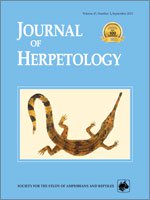Oviposition site selection is an important aspect of reproduction for species such as amphibians that breed in dynamic environments. We examined predictors of oviposition site selection of Spotted Salamanders (Ambystoma maculatum) at Cowan's Ford Wildlife Refuge in Mecklenburg County, North Carolina. We conducted egg mass surveys and checked 40 minnow traps for potential predators every 2 days along transects, sampling a subset of all representative habitat within the wetland. Random points were generated for each egg mass to compare microhabitat conditions in areas where egg masses were present versus undetected. We constructed a paired logistic regression model and used Akaike information criterion to rank the associations between oviposition site and water depth, temperature, predator density, and vegetation. Ambystoma maculatum egg mass location was best predicted by deeper water and denser submergent vegetation. Our study suggests that A. maculatum select oviposition sites actively, rather than ovipositing in all available microhabitat, implying that vegetation structure and hydrology of ephemeral wetlands are important for the successful reproduction of this species.
How to translate text using browser tools
1 September 2013
Oviposition Site Selection by Spotted Salamanders ( Ambystoma maculatum) in an Isolated Wetland
Madeleine M. Kern,
Adriana A. Nassar,
Jacquelyn C. Guzy,
Michael E. Dorcas
ACCESS THE FULL ARTICLE

Journal of Herpetology
Vol. 47 • No. 3
September 2013
Vol. 47 • No. 3
September 2013




